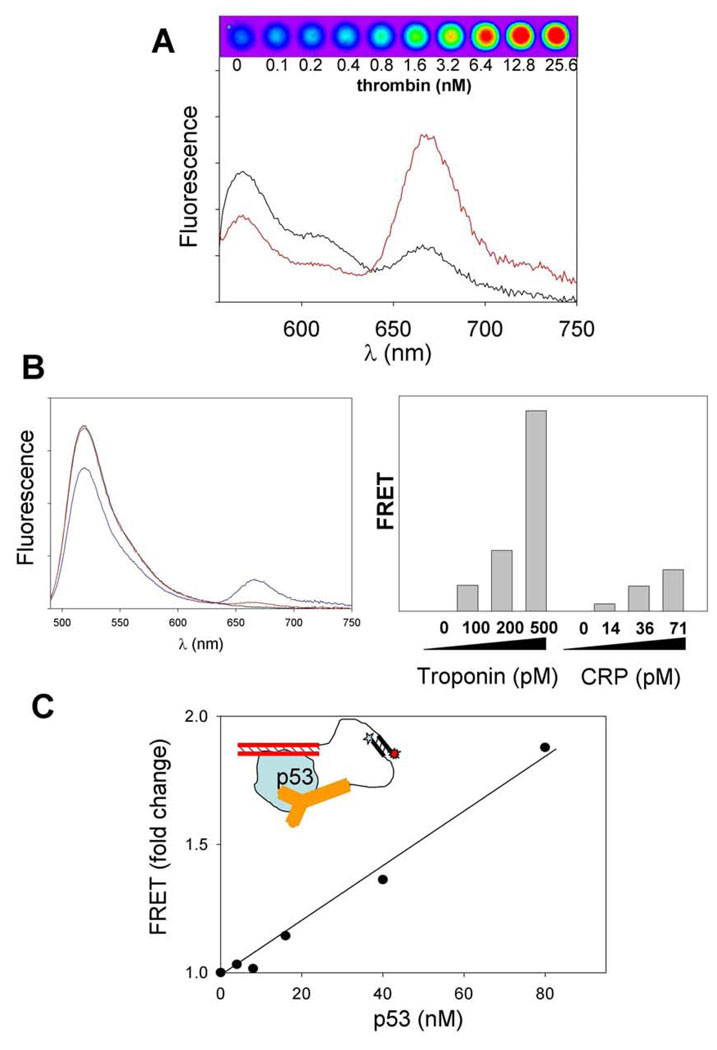Fig. 2.
Examples of applications of sensor design shown in Fig. 1. (A) Sensor for thrombin utilizing thrombin-specific aptamers as target recognition elements. Reprinted with permission from [9]. Copyright 2005 American Chemical Society. Fluorescence spectra of Cy3 and Cy5-labeled sensor mix in the absence (black) and presence (red) of thrombin. False color FRET fluorescence image of microplate wells containing sensor and indicated concentrations of thrombin is also shown. (B) Sensors for cardiac troponin and C-reactive protein (CRP) utilizing target-specific antibodies as target recognition elements. Reprinted with permission from [10]. Copyright 2008 American Chemical. Society. Left panel: Fluorescence spectra of fluorescein and Cy5-labeled sensor mix in the absence (red) and presence (blue) of troponin. Right panel: FRET signals observed at low target concentrations. (C) Sensor for p53 utilizing ds DNA and antibody as target recognition elements. Reprinted with permission from [10]. Copyright 2008 American Chemical. Society.

